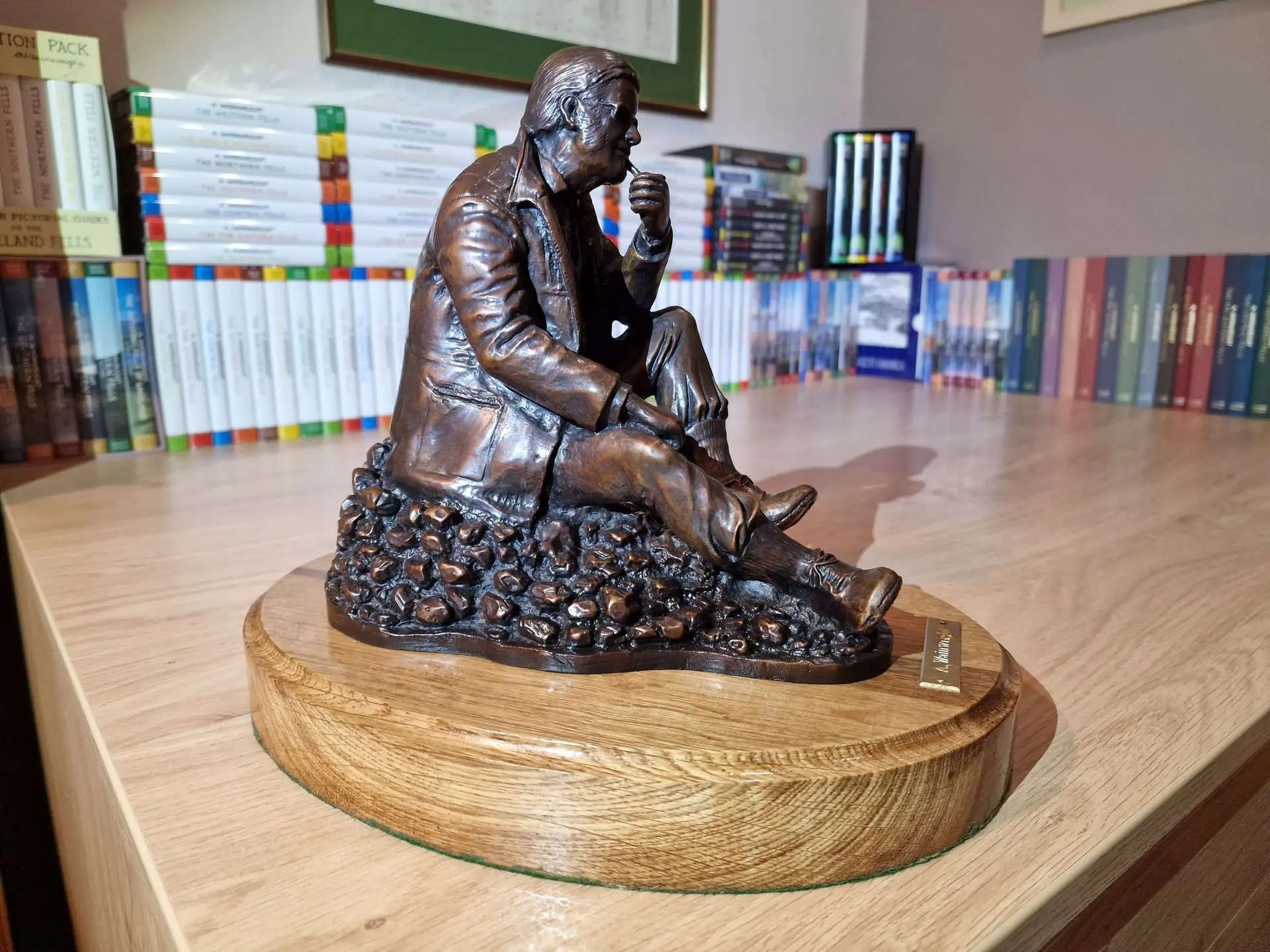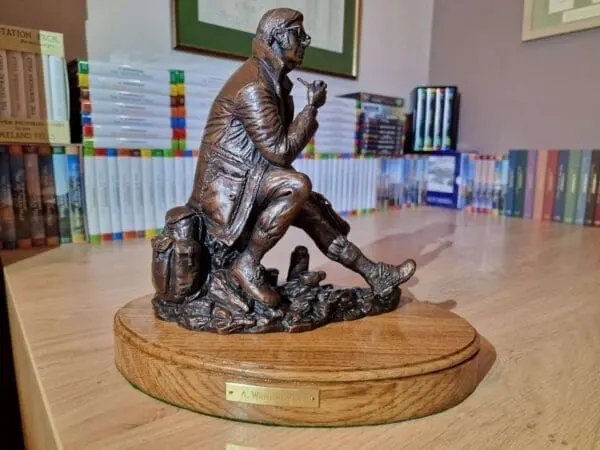The Final Alfred Wainwright Solid Bronze Sculpture: Pre-order deposit
£750.00
Clive Barnard is a skilled sculptor, and in the 1980s, he produced a lifesize bronze bust of Alfred Wainwright, which now resides in Kendal Museum. Clive also created several bronze and bronze resin sculptures of Wainwright. These sculptures were Wainwright’s idea, and he gave Clive sole rights to produce them. These sculptures have not been made for decades, but with the increasing interest in Alfred Wainwright, I approached Clive and asked him if creating a new solid bronze sculpture was possible. Although Clive had been long retired, he was delighted with my proposal.
As the project developed, we decided upon two sculptures. This is the second of the two solid bronze Sculpture Clive has ever produced of the late, great fellwanderer. It was based on the first-ever Wainwright sculpture, originally made of bronze resin. This was Wainwright’s favourite sculpture, so Clive decided to produce it in solid bronze for the very first time.
Below is a detailed description of how solid bronze sculptures are produced:
The lost wax method of casting dates from at least the 3rd millennium B.C., probably much earlier. This method produces hollow bronzes with thin walls and improves the quality of the casts. The lost wax casting process was invented to create the finest detail in a sculpture. It is still the most accurate and reliable means of producing complex shapes in metal castings containing all the detail of the original pattern. The main advantage is that it allows one to replicate the same object as often as required.
The process requires a silicone rubber mould to be made of the original artwork, capturing every detail of the original. This Master mould is used to produce wax copies of the original sculpture, and then, cups for pouring and rods that allow trapped air to escape are attached to the waxes. The waxes are then covered in a ceramic shell and fired. The wax is melted out (lost), and molten bronze, at 1200c, is poured in. When cool, the ceramic shell is broken off, and the rods and cup are removed. A fixing plate to take a base is welded to the underside, and the scars are carefully blended to match the original sculpture as intended by the artist by the chaser. The bronze is hand-polished in preparation for a patina or protective coating, and the wax coating is hand-applied and polished to a deep lustre. The bronze is first reheated during the patination process before an artist applies chemicals. The patination can achieve many different colours and effects that depend on the mix of chemicals used. Each process demands a very high skill level, taking generations to achieve. The sculpture is finely numbered, and the foundry mark is stamped in. The numbering of the piece is the order in which it was cast from the master mould, e.g., 1/50, the last number being the edition run before all moulds are destroyed.
This brand-new solid bronze Wainwright sculpture will be made to order as a limited edition of 50 and comes complete with a certificate of authenticity. It will be fixed to an attractive solid oak base with a nameplate on the front. The size, including the base, is 12″ x 8″ x 10″. These will be the final solid bronze sculptures ever produced by Clive. They will never lose value and should be considered an investment.
The total cost will be £1750, with an initial deposit of £750. The production lead time for the sculpture will be 6-8 weeks, and it can be shipped worldwide.
Additional images feature in the gallery.








